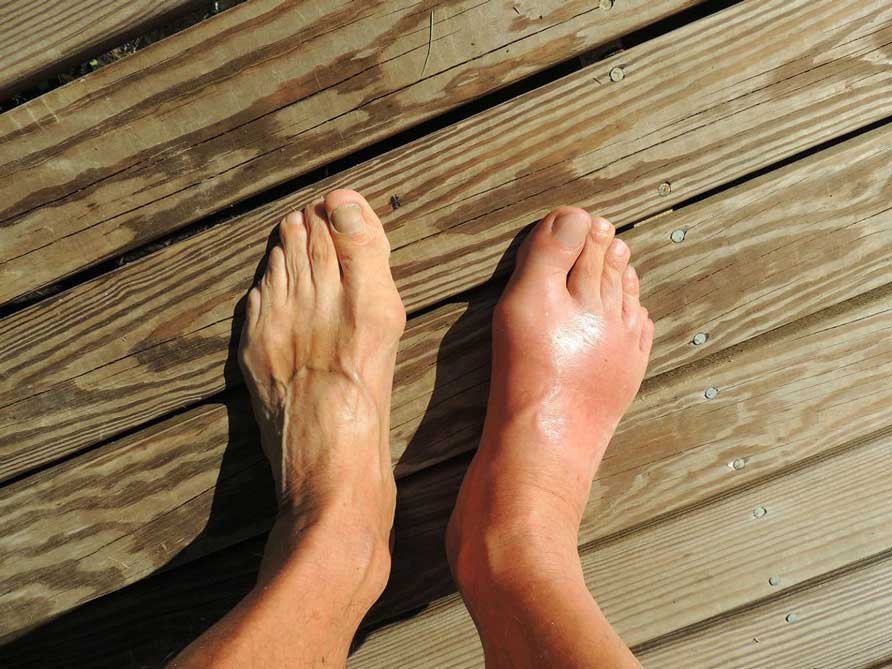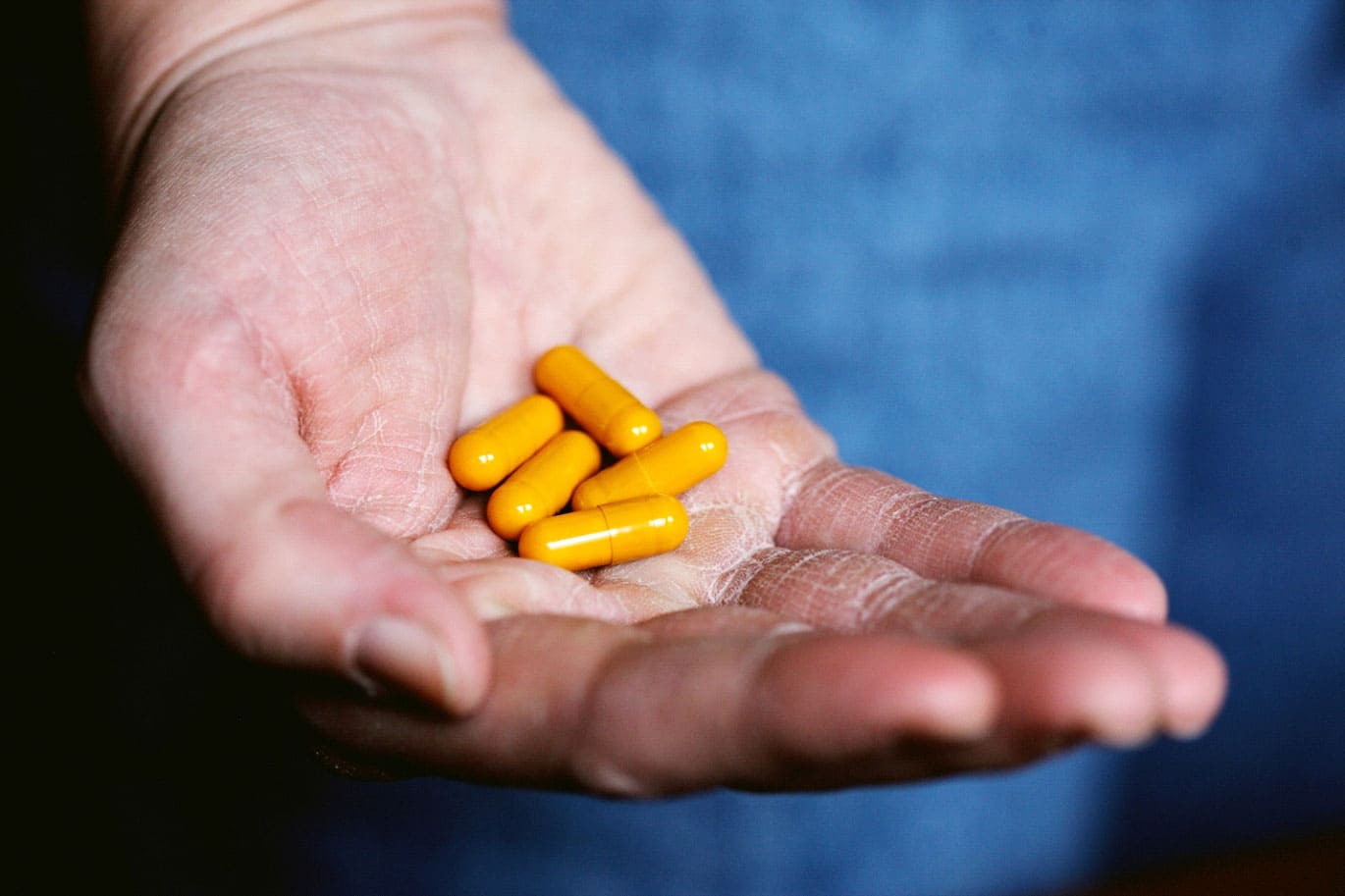Buckle up for Gout Flare-up
14
July
2021

Burning? Itching? Tingling? You know what's coming
You won't be able to stop a gout attack once it has begun, especially once you start sensing that the flare-up is on its way. However, there's a lot you can do before, during, and after.
Hold up, before we start, why don't we explain what gout is for those of you who don't know.
Gout is known for its sudden, intense pain, swelling, redness, and tenderness in one or more joints, most commonly the big toe. Attacks can strike without warning, waking you up in the middle of the night with the impression that your big toe is on fire. Even the weight of the bedsheet on the afflicted joint may be unbearable since it is hot, swollen, and painful.
The term "gout" describes a wide range of gout symptoms, from acute to chronic. Acute gout is characterized by random episodes that can affect almost every major extremity joint. The hands and feet are the most commonly afflicted. On the other hand, chronic gout is characterized by tophi, which are hard swellings on the joints. Tophi are composed of uric acid and can grow to be quite significant, even bursting through the skin.
What causes gout?
Gout is a perfect example of uric acid overabundance in your body, and it's the most well-known and well-described kind of arthritis. The excess uric acid builds up in the joints in crystal form, causing inflammation and pain. But how does this happen? When your body breaks down purines naturally present in your body, uric acid is produced.
Purines can also be present in some foods, such as red meat, organ meats, and purine-rich seafood. Some of them are liver, anchovies, sardines, mussels, scallops, trout, and tuna. In addition, higher uric acid levels can be found in alcoholic beverages, particularly beer, and drinks sweetened with fruit sugar (fructose).
Uric acid dissolves in your blood and is excreted through your kidneys. However, your body may sometimes generate either excessive or insufficient amounts of uric acid. This can result in a uric acid build-up in the joint or surrounding tissue, creating sharp, needlelike urate crystals that cause pain, inflammation, and edema.
Let's learn some of the symptoms
Gout symptoms and indications nearly often strike abruptly and frequently at night. They are as follows:
-
Excruciating joint pain. Gout is most commonly associated with the big toe, but it can affect any other joint. Ankles, knees, elbows, wrists, and fingers are among the others that are often afflicted. The pain will most likely be the worst during the first four to twelve hours after the flare-up starts.
-
Lingering discomfort. Some joint soreness may persist from a few days to a few weeks after the most severe pain calms down. Future attacks are more likely to last longer and involve more joints.
-
Inflammation and redness. Swollen, pain, heated, and redness develops in the afflicted joint or joints.
Limited range of motion. You may not be able to move your joints generally as gout advances.
When should you see your doctor?
It's wise to notify your doctor if you're experiencing a gout flare. If your symptoms don't improve, you may need to follow up to ensure your treatment strategy is working. If you have any of the following symptoms, contact your doctor right away:
This is the first time you've had a flare-up. Numerous additional diseases have some of the same symptoms as gout episodes, such as a joint infection.
You have chills and a high temperature. A slight fever may accompany a gout episode, but a higher temperature might indicate an infection.
-
Your symptoms did not improve after 48 hours or disappeared after a week. Call your doctor if you don't start to feel better within a few days. They could recommend an alternative course of action. However, most gout episodes will go away on their own within a few weeks, even without treatment.
Possible complications
If you have gout, watch out because you can develop more severe conditions, such as:
-
Recurrent gout: Some people may never have to deal with gout symptoms again. Others may have gout that flares up again and again on many occasions during the year. In patients with recurrent gout, medications may help avoid episodes.
Advanced gout: Untreated gout can lead to the formation of urate crystal deposits under the skin, which, as mentioned before, are known as tophi. Tophi can appear anywhere on your body, including your fingers, hands, feet, elbows, and the Achilles tendons at the backs of your ankles. Tophi are typically painless, although they can swell and become painful during gout episodes.
Kidney stones: Gout patients' urinary tracts can get uric acid crystals, resulting in kidney stones, which can be prevented using certain medications.
How can you treat gout?
Gout treatments aim to lessen the pain and inflammation of individual episodes as well as their frequency. Some of the traditional treatments include:
Diet adjustments:
Reducing or eliminating alcohol use, particularly beer.
Drinking large quantities of water or other nonalcoholic beverages.
Increasing your low-fat or fat-free dairy products intake.
Limiting your meat consumption and replacing it with plant-based proteins such as beans and lentils.
Gout medication:
The main goal of drug treatments during a gout episode is to decrease pain and inflammation. Nonsteroidal anti-inflammatory drugs (NSAIDs), colchicine, and corticosteroids are the three types of medications used for this. On the other hand, xanthine oxidase inhibitors and probenecid are two more medicines used regularly to help prevent future gout episodes.
NSAIDs reduce both pain and inflammation. Many of them are available over the counter in low dosages and by prescription in greater dosages. However, they can induce nausea, diarrhea, and stomach ulcers, among other gastrointestinal side effects. In rare circumstances, they can harm the kidneys or the liver.

Colchicine keeps uric acid from producing urate crystals in the body. It can successfully prevent pain and swelling if taken immediately after the beginning of acute gout symptoms. It's also occasionally recommended regularly to avoid future flares. However, similar to NSAIDs, Colchicine has side effects, including nausea, vomiting, and diarrhea. People who are unable to take NSAIDs have generally been prescribed this medication.
Corticosteroids can effectively reduce inflammation. They can be given orally or injected straight into the afflicted joint. However, when taken over an extended period, they cause significant side effects, including diabetes, osteoporosis, high blood pressure, cataracts, increased risk of infection, and death of bone tissue (avascular necrosis), especially in the hip and shoulder joints. As a result, they're often reserved for patients who can't take NSAIDs or colchicine.
Xanthine oxidase inhibitors reduce the quantity of uric acid generated by the body. However, when you first start using these medications, you may experience an intense gout attack. They can also exacerbate the flare if consumed during its occurrence. As a result, upon taking a xanthine oxidase inhibitor, patients with gout are frequently prescribed a short course of colchicine. Rash and nausea are among the possible side effects.
Probenecid (Probalan) is a medication that helps the kidneys remove uric acid from the bloodstream. Rashes, stomach discomfort, and kidney stones are all possible side effects.
One of the most crucial strategies to minimize the frequency of gout episodes is adjusting your diet. The objective of these modifications is to reduce uric acid levels in the blood.
You can do so by:
Risk factors and prevention
We've already covered that if you have much uric acid in your body, you're more prone to have gout. As previously mentioned, diet is one of the factors; however, there are more:
Weight. Your body creates more uric acid when you're overweight, and your kidneys have a more challenging difficulty removing it.
Medical problems. Many diseases and conditions cause gout. Untreated high blood pressure and chronic illnesses including diabetes, obesity, metabolic syndrome, and heart and kidney disease.
Particular medications. Low-dose aspirin and certain hypertension medications might raise uric acid levels, such as thiazide diuretics, angiotensin-converting enzyme (ACE) inhibitors, and beta-blockers. In addition, anti-rejection medications administered for patients who have had an organ transplant might also cause problems.
Age and gender. Gout is more common in males than in females, owing to women's lower uric acid levels. Men are also more prone than women to acquire gout symptoms earlier in life, usually between 30 and 50, whereas women often develop symptoms after menopause.
Genetics. You're more likely to get gout if other members of your family have had it.
Recent surgery or trauma. A gout episode can occasionally be triggered by recent surgery or trauma. For example, getting vaccinated can cause gout flare-ups for certain people.
Maintaining a balanced diet, a healthy weight, and regular exercises can be promising preventative approaches for gout. In case you already have gout, taking preventive medications after consulting your doctor can avoid flare-up episodes.

Reference list:
Editorial Team. Gout Treatments: Traditional vs. Alternative Methods. Healthline. 2014.
Healthline Retrieved from: https://www.healthline.com/health/gout-treatments#prevention
Mayo Clinic Staff. Gout - Symptoms and causes. [online] Mayo Clinic. 2019.
Retrieved from:
https://www.mayoclinic.org/diseases-conditions/gout/symptoms-causes/syc-20372897
Treating Gout at Home. WebMD. 2021.
Retrieved from: https://www.webmd.com/arthritis/gout-attacks-at-home
If you or anyone you know is suffering from pain, call us today on (254) 580-8765 to book an appointment with our expert doctors.